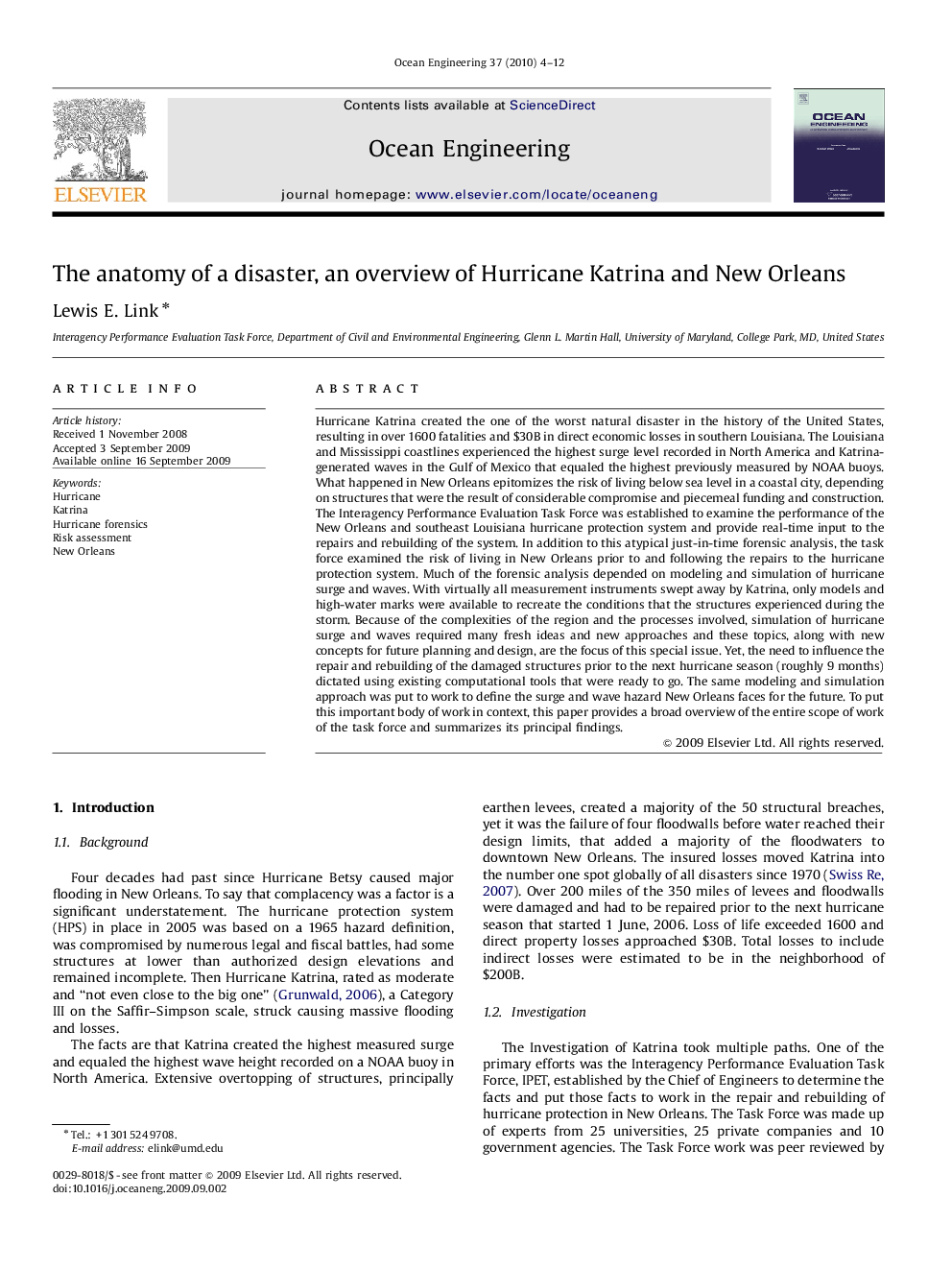| کد مقاله | کد نشریه | سال انتشار | مقاله انگلیسی | نسخه تمام متن |
|---|---|---|---|---|
| 1726905 | 1015141 | 2010 | 9 صفحه PDF | دانلود رایگان |

Hurricane Katrina created the one of the worst natural disaster in the history of the United States, resulting in over 1600 fatalities and $30B in direct economic losses in southern Louisiana. The Louisiana and Mississippi coastlines experienced the highest surge level recorded in North America and Katrina-generated waves in the Gulf of Mexico that equaled the highest previously measured by NOAA buoys. What happened in New Orleans epitomizes the risk of living below sea level in a coastal city, depending on structures that were the result of considerable compromise and piecemeal funding and construction. The Interagency Performance Evaluation Task Force was established to examine the performance of the New Orleans and southeast Louisiana hurricane protection system and provide real-time input to the repairs and rebuilding of the system. In addition to this atypical just-in-time forensic analysis, the task force examined the risk of living in New Orleans prior to and following the repairs to the hurricane protection system. Much of the forensic analysis depended on modeling and simulation of hurricane surge and waves. With virtually all measurement instruments swept away by Katrina, only models and high-water marks were available to recreate the conditions that the structures experienced during the storm. Because of the complexities of the region and the processes involved, simulation of hurricane surge and waves required many fresh ideas and new approaches and these topics, along with new concepts for future planning and design, are the focus of this special issue. Yet, the need to influence the repair and rebuilding of the damaged structures prior to the next hurricane season (roughly 9 months) dictated using existing computational tools that were ready to go. The same modeling and simulation approach was put to work to define the surge and wave hazard New Orleans faces for the future. To put this important body of work in context, this paper provides a broad overview of the entire scope of work of the task force and summarizes its principal findings.
Journal: Ocean Engineering - Volume 37, Issue 1, January 2010, Pages 4–12